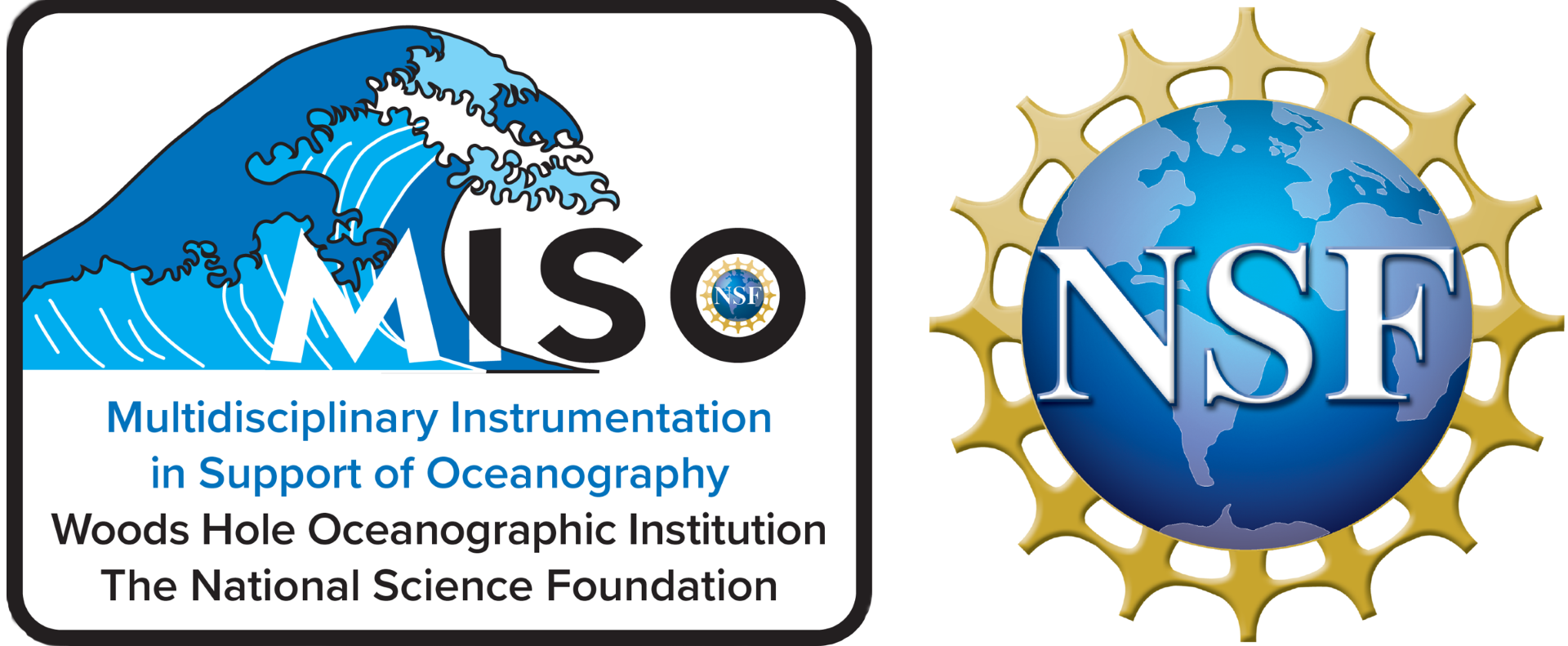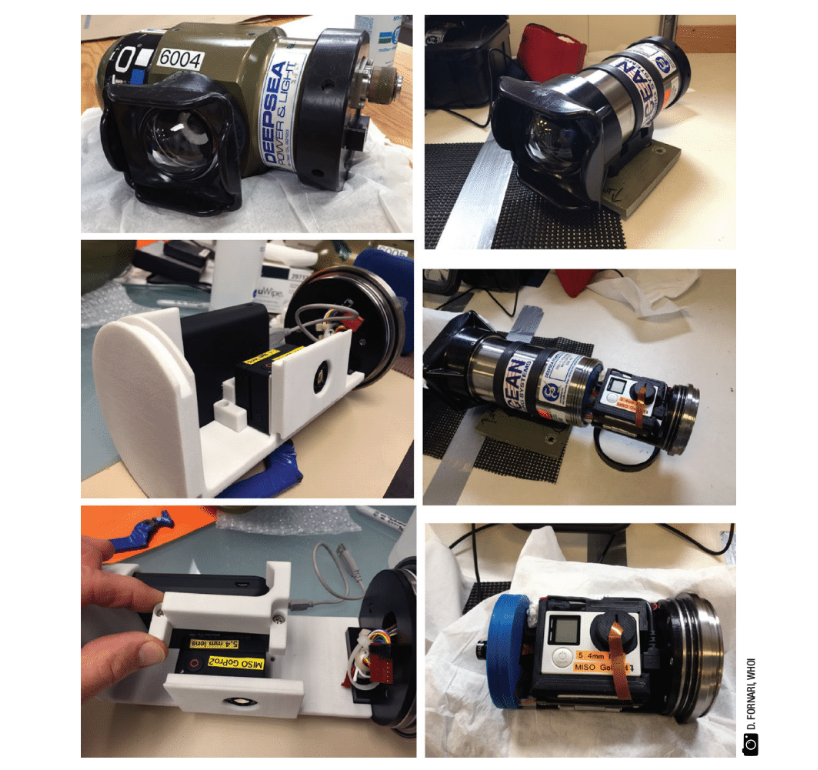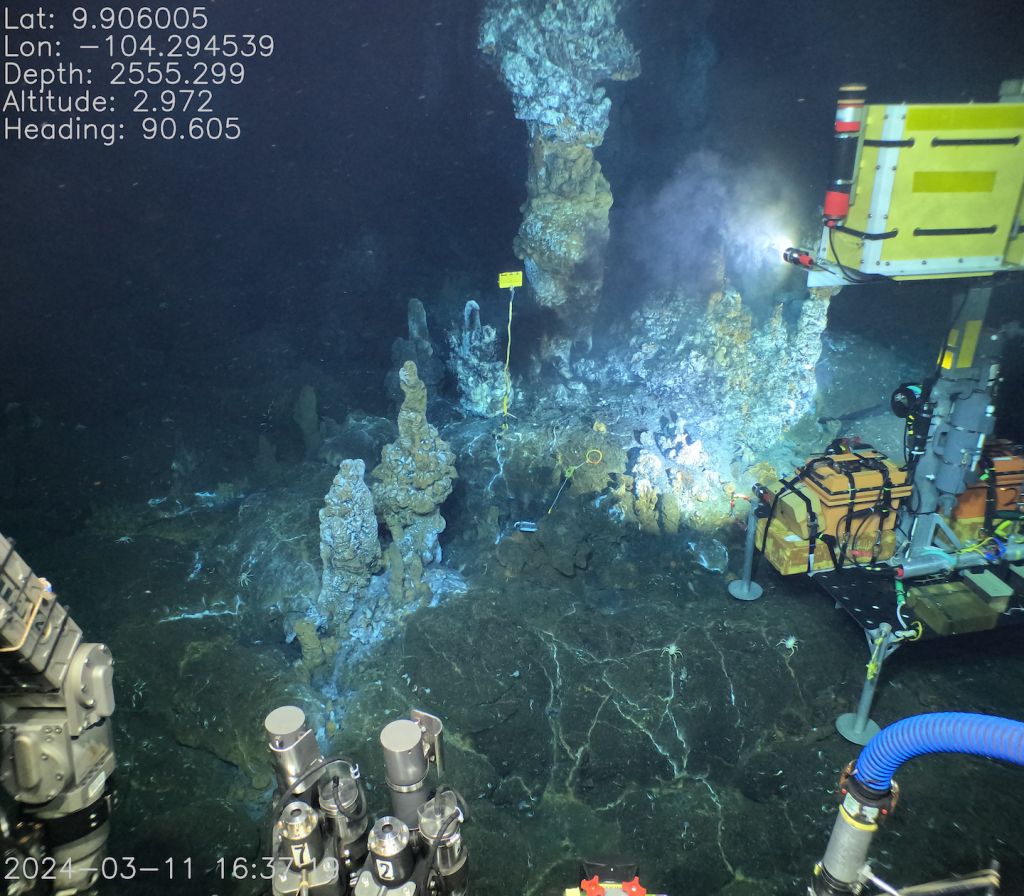MISO GoPro™ Deep-sea Camera Systems
In collaboration with DeepSea Power & Light (DeepSea) (San Diego, CA), EP Oceanographic and Ocean Imaging Systems (EPO and OIS) (Pocassett, MA), and Back-Bone Canada, the MISO Facility has developed an excellent suite of autonomous, fixed focus, very high-resolution deep-sea cameras (6,000 m to 11,000 m rated) that can take >24 hrs of 10-27MP digital still images or ~18 hrs. of 4K or 5.3K cinematic video. The MISO GoPro™ camera can be used on a wide range of deep-sea vehicles and sampling systems, providing an important capability to simultaneously document water column measurements, seafloor samples, and seafloor observations. The following section describes the various generations of MISO deep-sea camera systems and the ongoing collaborative efforts to produce the autonomous, high-quality system in use today.
The current iteration of the MISO deep-sea camera was developed over the past ~10 years using ~20-year-old DeepSea Digi SeaCam® camera housings originally developed to support the original MISO TowCam system in the early 2000s. The TowCam system has provided both imaging and sampling capabilities across many seafloor environments since the early 2000s (link to TowCam section). Today, the TowCam system primarily uses a higher resolution OIS digital still camera, which replaced the Digi SeaCam housings and the cameras they contained (3.3MP Nikon Coolpix imaging modules) in ~2012. The TowCam system continues to provide high-resolution (24MP) seafloor imaging using lighting provided by 300 or 600 watt/sec strobes synchronized to the camera’s shutter.
In 2015, the WHOI-MISO team used off-the-shelf GoPro HERO4™ consumer cameras, with a special 5.4 mm non-distortion lens and a newly designed internal chassis that fit the older Digi SeaCam housings, including a USB-C battery pack for supplemental power, to implement a new, self-contained/autonomous deep-sea camera that could be used on a wide range of deep-sea vehicles and sampling systems to document observations, samples, and vehicle operations when used on MISO designed imaging seafloor landers.
Since 2015, these MISO GoPro deep-sea cameras have provided superb imaging capabilities on >30 research cruises using deep-submergence vehicles, TowCam, box corers and multicorers, and seafloor landers.
In 2018, because of the advanced age and limited availability of only three of the original MISO Digi SeaCam housings manufactured in 2002, three new DeepSea Super SeaCam housings, made out of Titanium (Ti), were purchased with National Science Foundation – Ocean Instrumentation Program funding. A collaboration between MISO and OIS led to the design and successful use of the new Super SeaCam housings with HERO4TM cameras as a “2nd generation” MISO GoPro deep-sea camera system. The Super SeaCam housing uses the exact dome and internal corrector optics as the original DeepSea Digi SeaCam housing. However, because of the internal dimensions of the Super SeaCam housing, the HERO4™ camera orientation and lens configuration required a re-design of the internal camera chassis using lens relocation hardware designed by Back-Bone Canada. OIS designed and assembled the internal chassis using HERO4TM cameras with the special 5.4 mm non-distortion lens. OIS also designed and provided an internal Li-ion battery pack and DC/DC converter to match the HERO4’s power requirement for extended duration image acquisition (Figure 3).
The MISO-OIS GoPro™ 2nd generation deep-sea cameras in the MISO Facility continue to be used for a wide range of seafloor imaging and are requested routinely by many investigators; however, the HERO4TM cameras are no longer manufactured or supported by GoPro™, and the lens conversion kits required to support the OIS-design for the GoPro to function in the Super SeaCam housing are also not available. While the MISO facility has several spare internal chassis for this 2nd generation MISO GoPro camera, it was clear that a transition to the newer, more capable GoPro HERO11™ camera modules was needed. This upgrade in camera capabilities would continue to provide autonomous, self-contained high-resolution imaging capacity for the broad spectrum of seafloor sampling and documentation of observations required when using NDSF and other deep-submergence vehicles as well as to provide correlative seafloor images during bottom sampling using box corers and multicorers.
The 3rd generation MISO GoPro™ deep-sea cameras that utilize GoPro HERO11™ camera modules have now been used continuously on >80 Alvin dives since August 2022. These cameras provide the best still images (27MP) of the work area in front of Alvin at sites in the Gulf of Mexico, Blake Outer Ridge, East Pacific Rise 9° 50'N, and Guaymas Basin, Gulf of California expeditions (AT50-04, AT50-05, AT50-06, and AT50-07, AT50-09, AT50-20, AT50-21, AT50-22), as well as 5.3K cinematic video imagery in various forward and down-looking orientations on Alvin’s front basket. It is important to note that these cameras require no tasking from observers or pilots during dives; they are set to record 27MP images every 5 sec, or continuous 5.3K cinematic video at 30 fps, and use Alvin’s LED lighting from DeepSea for illumination. The cameras have also been used to provide exceptional video and still imagery of Alvin and ROV Jason working at the seafloor study sites using the MISO GoPro™ camera systems on deep-sea landers positioned by the submersibles at several study areas.
During 2023-2024, DeepSea produced ten additional Digi SeaCam housings in an upgrade effort funded by NSF and DeepSea so that the MISO Facility can continue to support NSF-funded oceanographic research and provide deep-sea cameras to other deep submergence facility operators, both in the US and internationally (Figure 4).
As noted above, in 2014, the GoPro HERO4 Black™ camera was initially chosen as a candidate for upgrading MISO deep-sea imaging capabilities due to the camera’s small form factor, ease of operation, and high-end specifications.
However, integrating the camera into the DeepSea housing required thoughtful engineering changes to the camera form-factor. Though the original camera is physically small, it features an offset lens, making it difficult to centre in the optimal position behind the existing DeepSea corrector optics. In fact, the offset lens makes it impossible to mount in the existing DeepSea housings rated for 6,000 m. In 2014, the only available housing other than the Digi SeaCam housing with this corrector was the Super SeaCam, which had a max depth rating of 6,000 m. The 11,000 m depth rating would not be realized until the newer DeepSea Optim SeaCam housing was released in 2019. Furthermore, the wide-angle fisheye lens built into the original camera is not well suited for combination with the DeepSea optical system; when paired with the corrector optics, its wide-angle field of view resulted in increased chromatic aberration towards the edges, and interior views of the dome were visible.
By 2014, Back-Bone had already developed interchangeable lens modifications for both the GoPro HERO3 and HERO4 cameras. The MISO project coincided with an internal Back-Bone project named “Modulus,” which expanded on these modifications. As part of that project, the HERO4’s 1/2.3” CMOS sensor was detached from the camera body and extended up to 30 cm via a custom-designed flex ribbon. The CMOS sensor was housed in its own aluminum shell complete with lens mounts for M12, CS-Mount, and C-Mount lens types. That configuration allowed the camera body to fit lengthwise into even the smallest pressure vessels while the CMOS sensor and lens were precisely positioned and centred behind the previously developed corrector optics.
With the form factor and lens mount issues addressed, the optics needed to be selected. The M12 (S-mount) lens type was chosen given the format’s extremely small size and high resolution. A rectilinear 1/2.3” 5.4 mm lens provided excellent results in a variety of tests and provides an image with none of the “fisheye” distortion that is often associated with GoPro™ cameras. Its fixed focus design has a depth of field ranging from 0.5 m to infinity as well as having an optimal field of view while not capturing interior views of the dome.
In 2022, Back-Bone’s standard H11PRO modified HERO11™ camera paired with the same 5.4 mm lens began service in DeepSea camera housings used by the MISO Facility. The new, larger 1/1.9” image sensor features significant image quality and resolution improvements over the HERO4™ but still features an offset lens, so the challenge of mounting the camera inside the newer 11,000 m rated housings needed to be addressed. Given the time window needed for a rapid deployment, the development of a new CMOS flex ribbon extension was not viable. Instead, a stripped-down version of the camera was developed with a dedicated M12 lens mount attached. In collaboration with EPO, this version of the camera was developed so that the CMOS and lens are securely mounted at a 90-degree angle to the main camera body. That configuration allows the assembly to fit into the DeepSea Optim SeaCam housing and slide forward into the proper position behind the dome’s corrector optics.
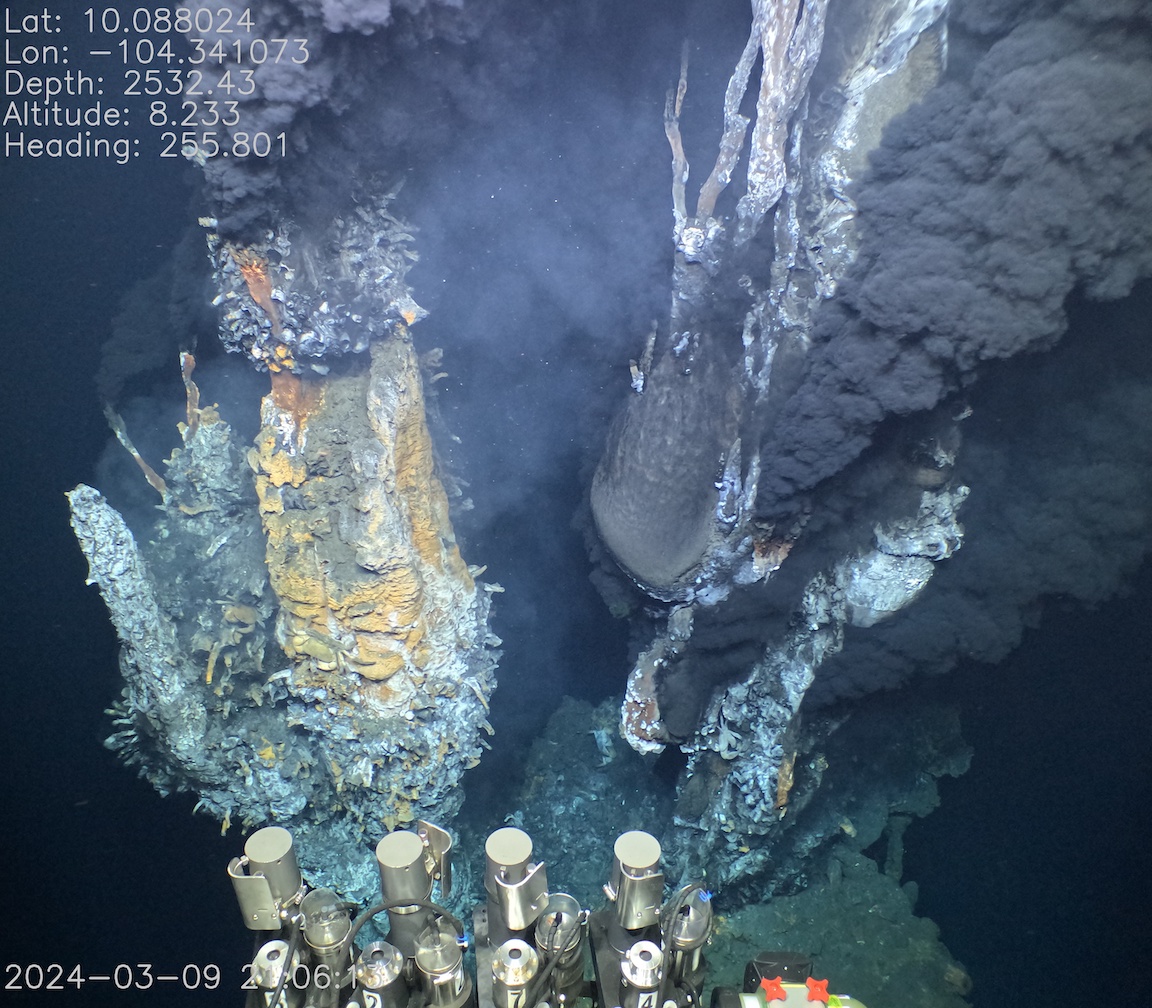
Examples of MISO GoPro™ Camera Systems Imagery from National Science Foundation Funded Expeditions
Scientific expeditions utilizing the MISO GoProTM camera systems have captured fundamental seafloor processes at mesophotic reefs, spreading centers, seamounts, seeps, canyons, and hydrothermal vents. Access to high-resolution, infinite-focus imagery at these sites has been transformative for performing modern analyses on 1) seafloor habitat classification and mapping, 2) counting individuals of different fauna, 3) non-invasive computation of fluid fluxes, and 4) creating 3D renderings of complex structures. This section provides some exemplar imagery from NSF-funded expeditions from 2022 through 2024, using 2nd and 3rd generation MISO GoPro cameras in both the DeepSea Digi SeaCam and Super SeaCam housings.
High resolution still and video imagery produced by the MISO Facility deep-sea cameras, and especially the new MISO GoPro cameras, have contributed to dozens of peer-reviewed scientific publications as well as numerous educational and outreach activities that highlight multi-disciplinary oceanographic research to the public and stimulate students at all levels, from K-12 to undergraduate and graduate students (see references listed in Supplementary Material Table 2). Imagery from MISO camera systems have also been used in artistic projects as a visual portal for the lay public to the largely inaccessible environments of the deep ocean. Images and video from MISO cameras have contributed to academic websites, have been used to support research documented in peer-reviewed publications, are used to highlight technology improvements in industry/technical publications, and are being used for several high-profile filming projects. These latter projects include: 1) a 3D IMAX film (tentative title: Born in the Abyss, based on research by C. Young (Institute of Marine Biology, University of Oregon) being produced with NSF funding by Stephen and Alex Low (NSF OCE-1851313, plus supplement OCE-2234492) Collaborative research: dispersal depth and the transport of larvae around a biogeographic barrier, and OCE-2215612 Using media and technology to advance public awareness of research on microscopic larvae in the deep ocean; 2) a BBC production series Planet Earth III where filming of Alvin supporting research at mid-ocean ridge hydrothermal vents at the East Pacific Rise near 9° 50’N has been highlighted (aired in November 2023); and 3) a future BBC production, Blue Planet III, expected to air in 2026.
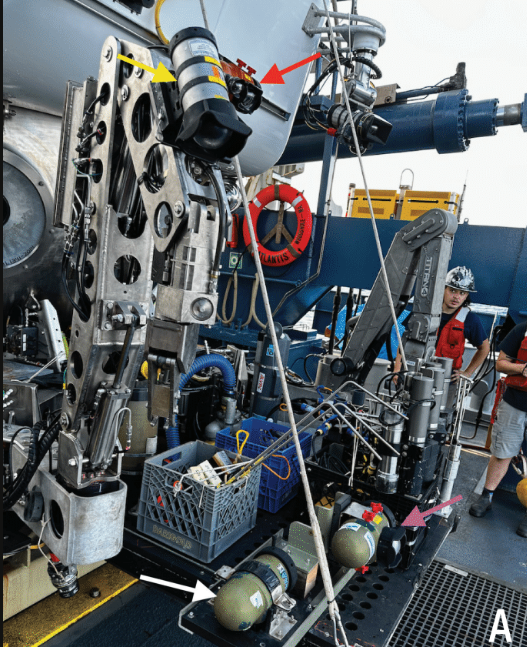
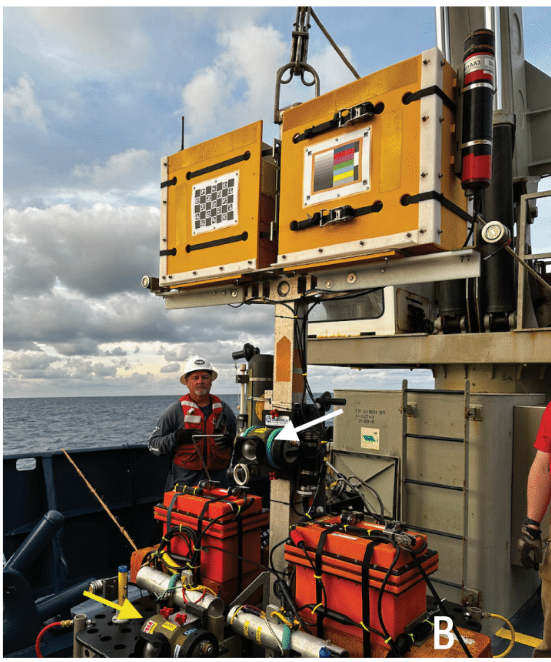
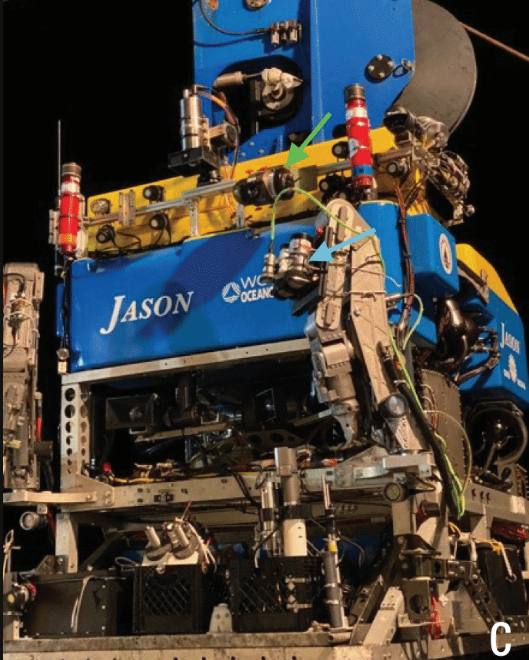
Photos above show MISO GoPro deep-sea camera systems on Alvin(A), a MISO/NDSF imaging lander (B), and ROV Jason (C). (A) shows four MISO GoPro cameras in various mounting positions. Red arrow shows Digi SeaCam with a HERO11™ camera module shooting 27MP still images every 5sec for the duration of the dive’s ~8-10 hrs. total operational time – deck to deck. Yellow arrow points to a MISO-OIS Super SeaCam camera with a HERO4™ camera shooting 4K video at 24 fps for the entire dive duration. White arrow shows a Digi SeaCam with a HERO11™ camera module shooting 5.3K cinematic video at 30 fps shooting vertically down from the front of Alvin’s sample basket. Lighting for this camera is provided by three DeepSea LED SeaLite (~9,000 lumens each) lights positioned behind and across from the camera mount position. Purple arrow shows a HERO11™ camera module shooting 5.3K cinematic video at 30 fps oriented to capture the terrain from a low, forward position as the submersible traverses the seafloor. Lighting for all forward-pointing cameras on Alvin is provided by 8-10 DeepSea LED lights. (B) shows the MISO/NDSF imaging lander as configured on an expedition in February2024 (AT50-21) to the East Pacific Rise near 9° 50'N. Yellow arrow points to a MISO GoPro™ Digi SeaCam housing with a HERO11 module shooting5.3K cinematic video at 30 fps, capturing vehicle operations. White arrowpoints to a MISO GoPro™ Digi SeaCam housing with a HERO11™ module shooting 27MP still images every 5 sec. Power for the lighting system consists of two 24 VDC DeepSea SeaBattery® power modules (orange housings) each with ~40 amp-hour capacity coupled to MISO deep-sea switches (silver cylinders above yellow arrow) that controls four DeepSeaLED lights. Each switch is activated by Alvin’s manipulator when it moves a slide fixture with a magnetic reed switch. (C) shows the front of ROVJason with two MISO-OIS Super SeaCam GoPro cameras mounted on the port manipulator (blue arrow) and a MISO Digi SeaCam GoPro camera for27MP still imaging on the upper port light-bar of the vehicle (green arrow).
